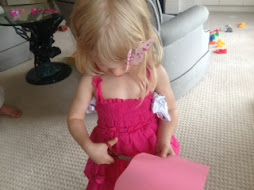College Goals - It’s never too early to plant seeds of attending college in your students. Give them a dream and a goal! One school I visited displayed pennants of the schools where the teachers graduated from in the front hall.
*Have the children brainstorm all the colleges and universities in your area. Talk about why it is important to go to college.
*Encourage your students to think about where they would like to go to college. Give them paper shaped like pennants to decorate with their college dream.
Math - Let children do surveys of favorite college teams.
Graph favorite teams.
Predict who will win the game. Who was right? Who was wrong?
Predict what the score will be. Who was closest?
*Let children choose a favorite player and write their number on a jersey. How many math facts can they think of to equal that number?
Social Studies – Use a map of the United States and locate where games will be played.
Internet Search – Look up team mascots and colors. Listen to college fight songs. Do exercises to fight songs.
Art – Cut pictures of players out of the newspaper or sports magazines. Challenge children to write creative stories about favorite players. They could also write letters to favorite players.
Guest Readers – Invite a local high school football team and cheerleading squad to visit your school to read books. There’s nothing more motivating to a young child than to see someone in a uniform model how “cool” it is to read!
Team Mascots - This game can be adapted to any school mascot, action hero, or seasonal character. Since I graduated from the University of Georgia, UGA was my first choice. This is a quick, simple game that can be played with any age level or any skill that needs to be reinforced. It’s the perfect game if you’ve got a few minutes before lunch or a few minutes at the end of the day.
WHY? shapes, colors, letters, words, numerals, math facts, etc.
WHAT? flash cards, picture of a favorite school mascot
HOW? Have children sit in a circle and encourage them to identify the information on the flash cards as you place them on the floor. Tell the children to turn around and hide their eyes. Take “UGA” and slip it under one of the flash cards. The children turn back around and raise their hand if they think they know where UGA is hiding. One at a time, have children call out a word, letter, shape, etc., and then look under that card. The game continues until a child finds UGA. That child may then be “it” and hide the mascot.
*Use a pocket chart to play this game. Arrange the flash cards in the pocket chart and then hide the mascot under one of the cards as the children hide their eyes.

HOW? Have children sit in a circle and encourage them to identify the information on the flash cards as you place them on the floor. Tell the children to turn around and hide their eyes. Take “UGA” and slip it under one of the flash cards. The children turn back around and raise their hand if they think they know where UGA is hiding. One at a time, have children call out a word, letter, shape, etc., and then look under that card. The game continues until a child finds UGA. That child may then be “it” and hide the mascot.
*Use a pocket chart to play this game. Arrange the flash cards in the pocket chart and then hide the mascot under one of the cards as the children hide their eyes.

More? Make a concentration game using various college mascots.
Make a matching game where children match mascots to college names.
What characteristics do you need to dress up and be a school mascot?
Have children write which mascot they would like to be and why.
Make a matching game where children match mascots to college names.
What characteristics do you need to dress up and be a school mascot?
Have children write which mascot they would like to be and why.






















































